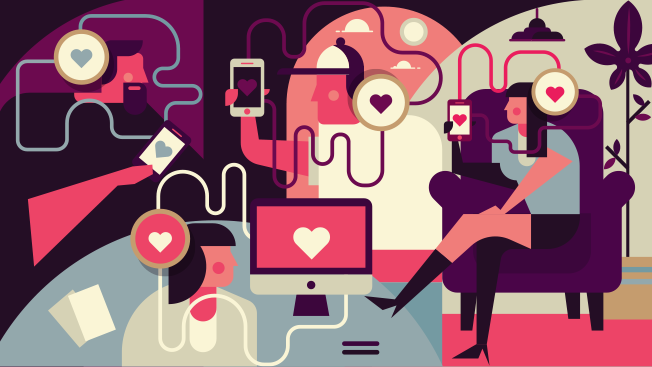The advertising industry has made huge strides in targeting, but there’s one more big step to take to make ads truly relevant: We need to adapt each creative message so it is interactive and personalized to every single individual.
The key to achieving what may be the holy grail of advertising is a thriving branch of artificial intelligence known as deep learning. It uses algorithms to mimic neural networks’ capabilities to recognize and act on abstract patterns.
Within just a few years, we’ll see ads that are:
1. Self-assembled in real time
Today, the state-of-the-art approach is to have variations of an ad targeted to specific audience segments. A retailer, for example, might send ads for sweaters to one segment, ads for bathing suits to another. The ads all use a similar design and template.
Soon, instead of those few variations, a brand will have a million personalized versions of an ad dynamically presented to a million different individuals. The AI will be given all possible creative assets for a campaign: logos, images, text, video and guidance on colors and language. It will then be fed data from every possible related campaign and use all the elements to flawlessly assemble the right creative for the right person at the right time, in real time.
2. Self-optimizing
As the self-assembled ads are presented to individuals, data that feeds the algorithms will be gathered, which will dynamically optimize and continually improve the creative executions to increase campaign performance. With access to data and the ability to learn, AIs will make the ads become ever more effective and cost-efficient.
3. Conversational
The final step in the implementation of artificial intelligence will be ads that let consumers respond to them in the same way they talk to other people. Picture a video ad for a carmaker: It might offer a click to sign up for a test drive or to download a brochure. But by using AI, the ad will encourage the consumer to ask any relevant question—“Where can I test drive?” “What’s the price range?” “What are the customization options?”—and automatically deliver a spot-on response.
How to take advantage
The elements that will let us move toward this personalized future are already available and we’re closer than you may think to assembling them.
Google has created algorithms that outperform people at recognizing objects within images and AIs that learn to recognize and analyze images in video. In one publicized example, deep learning algorithms, without human guidance, figured out that cats have a special place in YouTube videos and then identified cat images within 10 million of them.
The machines are also learning pattern recognition for more abstract data. AI will be able to ingest a lot of data, build a 360-degree profile of an individual and then execute on that person’s interests based on their age, income, prior interactions, shopping patterns and other data points. AI will detect and make decisions to meet the campaign goals based on whatever emerging patterns it finds.
Chatbots are already conducting natural language conversations with people from within apps. Amazon’s Echo and Google Voice are demonstrating, in homes, the capabilities of artificial intelligence to handle and process spoken queries and commands.
To be ready to work with AI-driven customized creative, marketers first need to get smart about data. Build a data strategy and invest in a good data management platform (DMP), one that can ingest, process and correlate data from social, search, mobile, desktop, CRM, location, shopping data and other user sources. Learn to handle and understand burgeoning masses of data.
Executives also need to have their creative people collaborate with engineers. Creativity and algorithmic thinking need to inform each other. Each side must learn to build on the other’s work.
Every person is a special individual, with their own preferences, thoughts, memories and genetics. We all deserve advertising messages that reflect our unique selves. That’s why we’re ready for a future in which data enhanced creativity helps algorithms deliver the perfectly useful, self-assembled, targeted and conversational message to each consumer in real-time.








